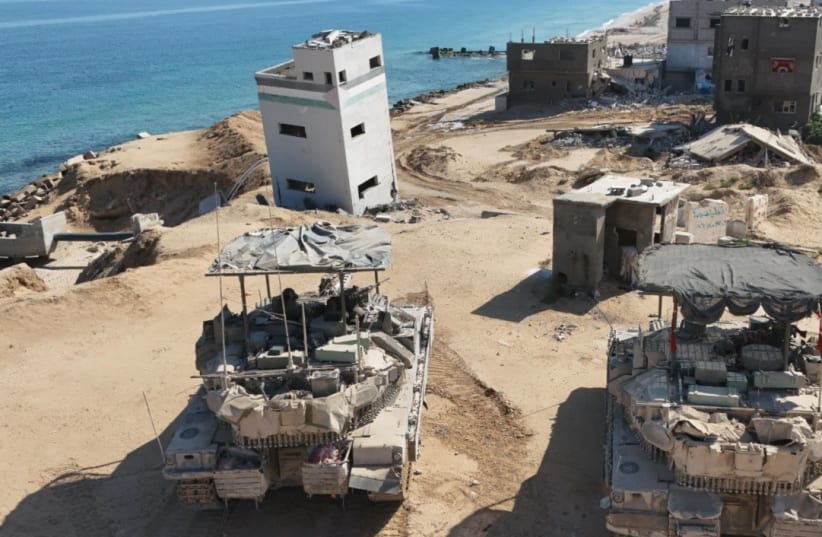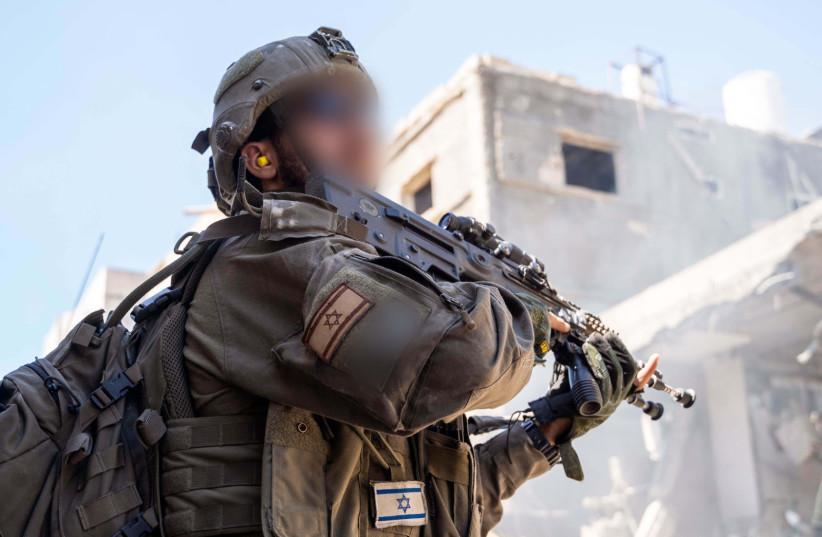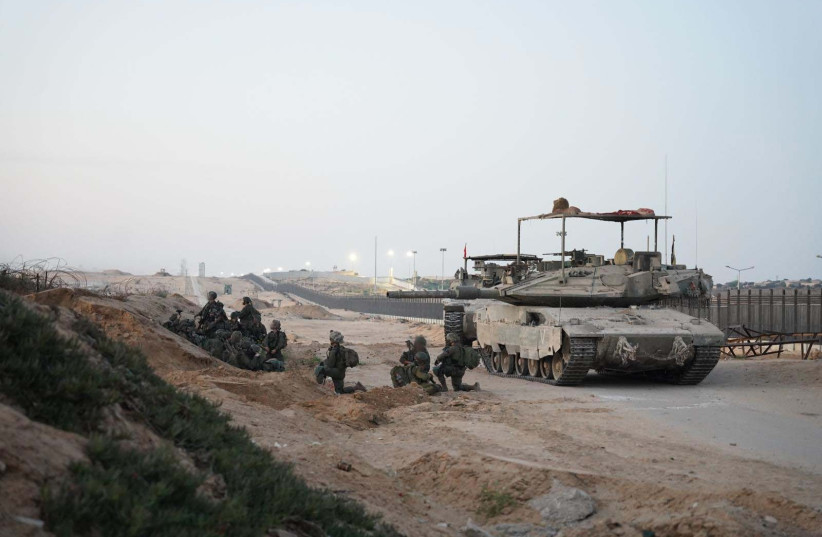by Yonah Jeremy Bob
The IDF also revealed that the houses and tunnels in Rafah had new kinds of defenses and boobytraps, with some houses having video surveillance in each room of the given house to facilitate ambushes.
 |
The IDF on Monday said that its Division 162 has defeated half of Hamas’s battalions in Rafah, including killing at least 550 terrorists, as well as destroyed around 200 tunnel shafts, and eliminated the terror group’s last major rocket inventory.
Further, the IDF said that within a couple of weeks it would likely be in control of all of Rafah and that the final battles with the remaining two Hamas battalions in parts of Tel al-Sultan and the eastern part of Shabura are already underway.
In addition, the IDF said that the tunnel network in Rafah, especially near the Philadelphi Corridor with Egypt has been found to be even more complex than those found in Khan Yunis, Jabaliya, and the military quarter of Gaza City.
Currently, the IDF says Division 162, commanded by Brig. Gen. Itzik Cohen, has already achieved operation control of over 60-70% of all of Rafah with all of the 1.4 million or so civilians having long fled to al-Muwasi on the coast, central Gaza and Khan Yunis.
IDF sources also said they believed they had killed much more than 550 terrorists, but that this number represented actual bodies seen, versus Hamas forces who entered a structure which was then bombed, but without finding a body.


One of the hardest battles was fought over the “NPK” area which is slightly north of the middle of the Philadelphi Corridor, and was the headquarters of Hamas’s Rafah brigade commander.
However, the IDF now has full control there.
IDF's invasion of Rafah
The IDF’s invasion of Rafah started on May 6 and by May 20, it had control of around 30-40% of Rafah, including the Philadelphi Corridor.
As of May 20, the IDF had said it had killed around 130 Hamas terrorists.
But given that at some point Hamas had 4,000 to 8,000 terrorists in Rafah, it is pretty clear that the vast majority fled with the mass of civilians who left the area.
There are some still fighting and some in hiding, waiting for some later point to carry out guerilla warfare style attacks.
Since May 20, IDF progress has been slower, but steady, including the need for extensive time to explore the tunnel networks.
To date, the IDF has identified 25 large tunnels which, at the very least, go up to the border with Egypt.
Strangely, the IDF, while implying that it was likely that many of them went into Egypt, would not yet confirm a single one crossing the border.
It was unclear if the hesitance to confirm was purely a question of inspections and time or if the politics of avoiding embarrassing the Egyptians was part of the calculation.
With Egyptian approval, the IDF is hoping to build underground obstacles and censors on the Philadelphi Corridor to prevent the future re-digging of cross-border smuggling tunnels.
The cross-border smuggling tunnels have been key to Hamas’s armament capabilities, including receiving weapons from Iran.
The IDF also said that the houses and tunnels in Rafah had new kinds of defenses and boobytraps, with some houses having video surveillance in each room of the given house to facilitate ambushes.
From the start of the war until now, Division 162 has suffered 3,800 wounded and 180 killed, with 23 fallen in the Rafah battles.
The importance of Rafah
An estimated 1.2 to 1.4 million Palestinians had taken refuge in Rafah since the outbreak of the war. The military subsequently stated it had evacuated 80% of the population from the area.
Amid international opposition, the IDF took the Palestinian side of the Rafah crossing on May 7, attaining full operational control of the crossing. The military has since been engaged in operations in the area.
Israel had maintained the importance of operating in Rafah to eliminate the last four Hamas battalions, which it believed were still in the region.


The Israel-Hamas war began on October 7 when Hamas launched an attack, with thousands of terrorists infiltrating from the Gaza border and taking more than 240 hostages into the Gaza Strip.
During the massacre, more than 1,200 Israelis and foreign nationals were murdered, including over 350 in the Re'im music festival and hundreds of Israeli civilians across the Gaza border communities.
120 hostages still remain in Gaza captivity.
Yonah Jeremy Bob
Source: https://www.jpost.com/israel-hamas-war/article-806594
No comments:
Post a Comment